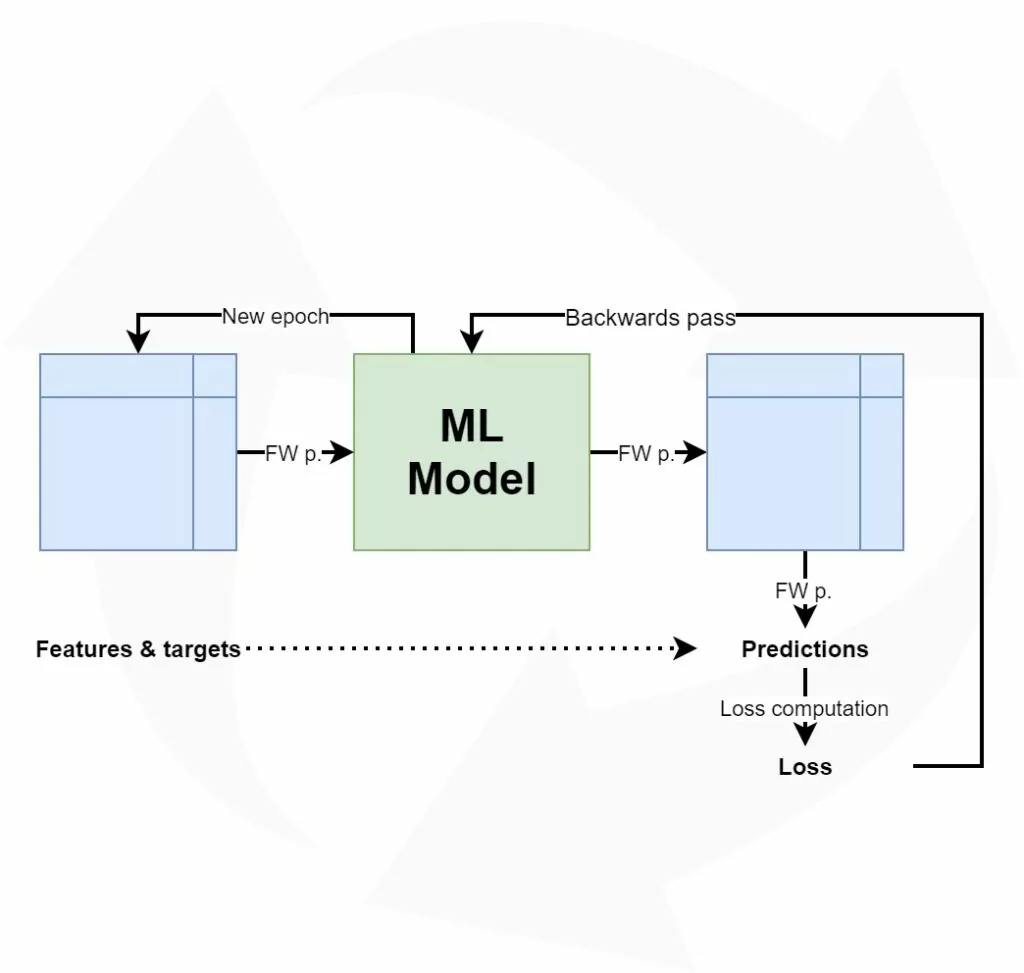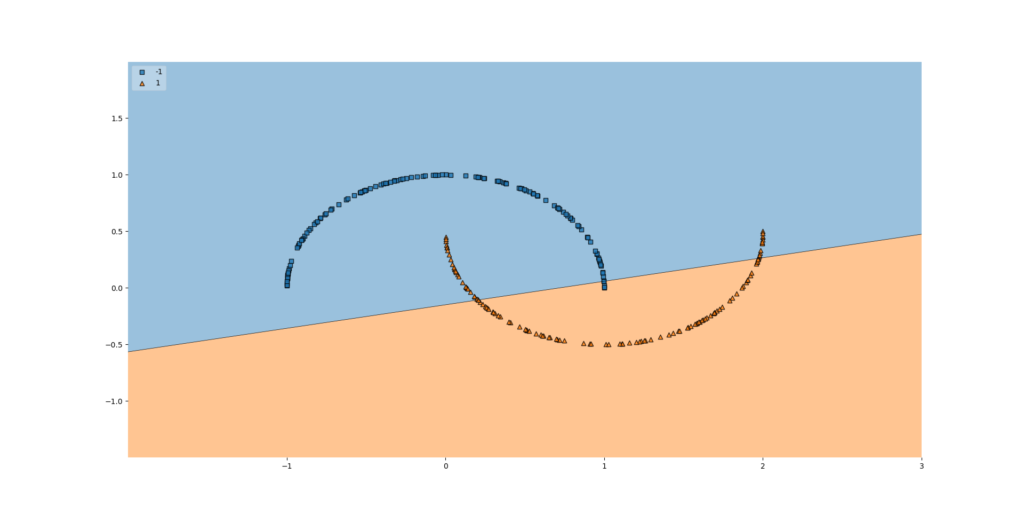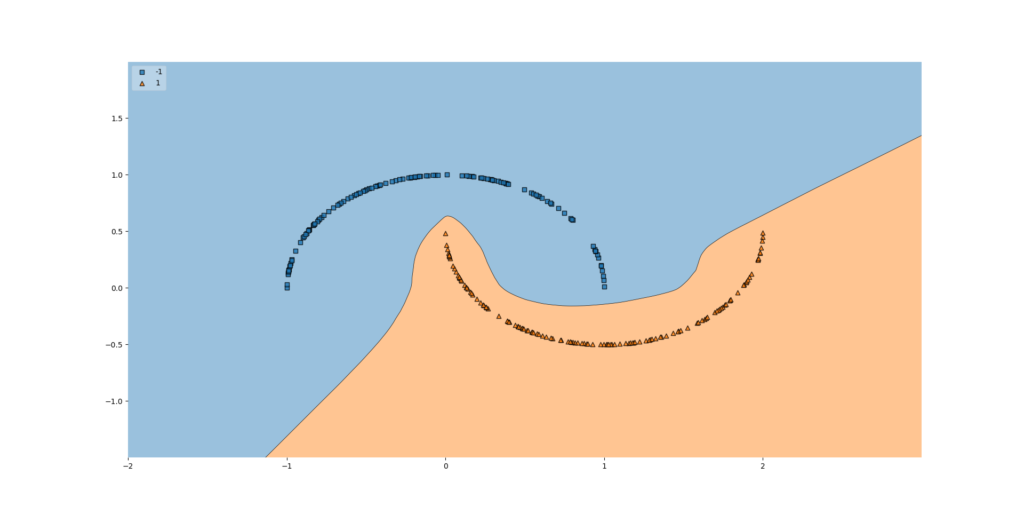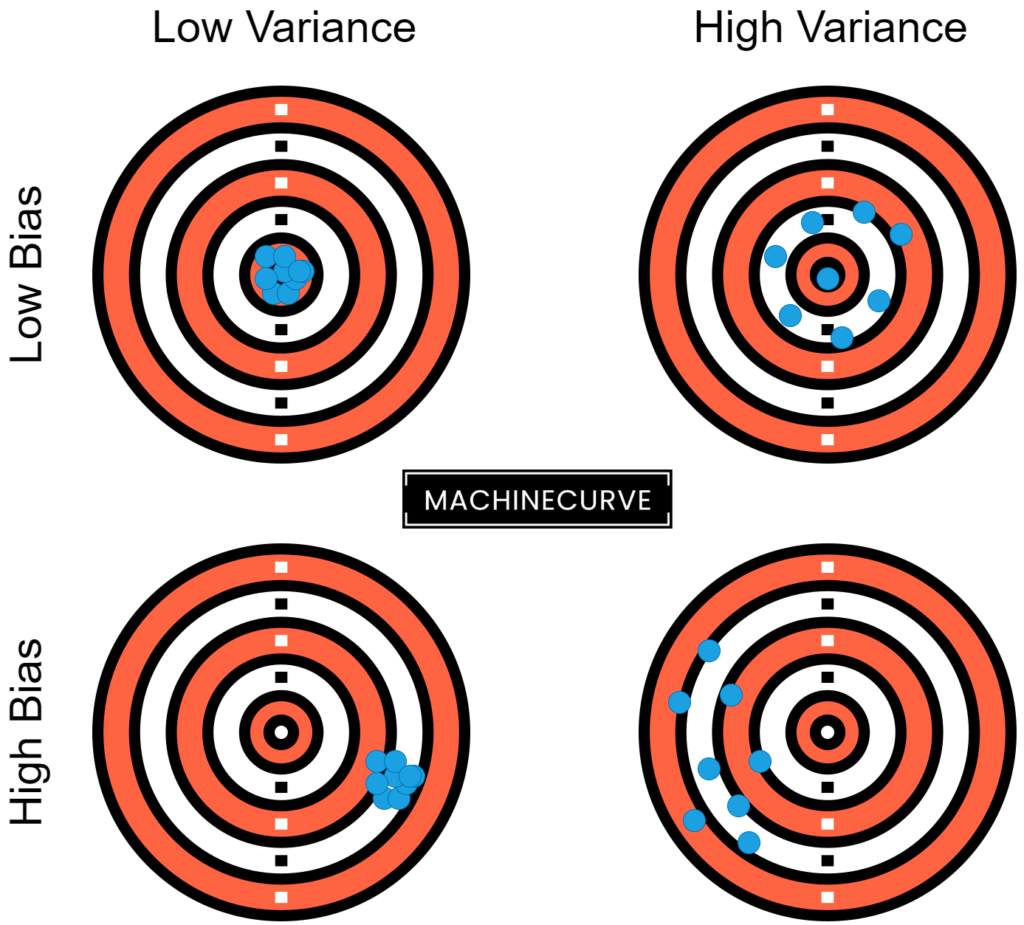Machine Learning Error: Bias, Variance and Irreducible Error with Python
November 2, 2020 by Chris
Supervised Machine Learning is one of the most prominent branches of Machine Learning these days. Using a labeled training set and an adequate model, it is possible to create a ML model that demonstrates very impressive results. As we will see, training such a model involves a cycle of feeding forward data through the model, observing how bad it performs, and subsequently optimizing it to make it better.
After some threshold is passed, the training process stops, and the model is trained.
The "observing how bad it performs" part is the focus of today's article. Because the error, with which the former is expressed, is interesting - because it is composed of multiple error subtypes. This article will focus on these subtypes, which are the bias error, the variance error and the irreducible error. We will find out what error is in general, what those subtypes are, and how we can decompose a TensorFlow ML model into the error subtypes.
Let's take a look! :)
Error in supervised machine learning: what is it?
From the article about loss and loss functions, we know about the high-level supervised machine learning process:
- Samples from a labeled dataset are inserted into the model - this is called "feeding the samples forward".
- The machine learning model generates a prediction for each sample.
- All predictions are compared to the labels, called the ground truth, and a loss value is output.
- Based on the loss value, the loss is computed backwards, to find the optimizations for the individual parts of the machine learning model.
- By means of some optimization mechanism (e.g. gradient descent or Adaptive optimization), the model is optimized.
Above, we talked about the "observing how bad it performs" part of training a supervised machine learning model. Note that "how bad" and "loss" have relatively similar meaning - and yes, they are connected.
The "loss value" effectively shows you how bad the model performs - in other words, how much off the model is compared to the ground truth, on average.
Hence, this loss value is also called the model error. Your goal as a machine learning engineer is to create a dataset, find a suitable algorithm, and tweak it accordingly, to generate a model that performs and generalizes well. In other words, it must be accurate in terms of the prediction, and work in a wide range of cases - even with data that the model has never seen before.
And of course, this is quite a challenge.

Error subtypes
Above, we saw that feeding forward the training samples results in a loss or error value. It can be used subsequently for improving your Machine Learning model. Now, we'll dive into the error concept, and will see that it can be decomposed in a few distinct subtypes: bias error, variance error and irreducible error.
Put simply, the subtypes together compose the notion of 'error' in the following manner:
Error = Bias error + Variance error + Irreducible error.
- Bias error: how strict the model generalizes to some designated set of functions.
- Variance error: how much the estimated function will change when the algorithm is trained with differing datasets.
- Irreducible error: error that is neither bias or variance error and is hence relatively random.
Bias error
In Dietterich and Kong (1995), we find that Mitchell (1980) introduces the concept of bias error as follows:
"Any basis for choosing one generalization [hypothesis] over another, other than strict consistency with the observed training instances."
While this sounds relatively vague - likely on purpose, for generalization purposes - we can relatively easily convert it into a definition that resonates well with ML researchers and engineers:
Bias involves an assumption of the Machine Learning model that the target function to learn is part of a set of target functions. In other words, if a model can only learn - or fit - a few example functions, it is a high-bias model. If the model can learn many functions instead, it is a low-bias model.
Bias, in the context of Machine Learning, is a type of error that occurs due to erroneous assumptions in the learning algorithm.
StackExchange (n.d.)
High bias, by making a lot of assumptions about the target function, simplifies the model and makes the fit less computationally intensive.
For example, linear regression is a high-bias model, as it attempts to learn fit data to a function of the form \(y = a \times x + b\), and nothing else:

Bias error quantifies the amount of error that can be attributed to this assumption. In the plot above, we can see that due to the high-bias property of the linear learner, the bias error shall be quite high.
- Models with high bias: linear regression, logistic regression, linear classification, linear neural networks, linear SVMs
- Models with low bias: nonlinear neural networks, nonlinear Support Vector Machines, decision trees.
Your choice for a ML algorithm should never be entirely dependent on the bias assumption of the model. For example, if you have a linear dataset, there is no need to start with neural networks - instead, a linear classifier or linear regression model would likely be able to achieve similar performance at a fraction of the computational cost. Therefore, make sure to think about the characteristics of your dataset, the bias property, but also make sure to consider what we will study next: the variance error.
Variance error
While the bias of a model tells us something about how rigid it is towards fitting a particular function, the variance of our model is related to our datasets:
Variance, in the context of Machine Learning, is a type of error that occurs due to a model's sensitivity to small fluctuations in the training set.
StackExchange (n.d.)
Say, for example that we are training the same machine learning model with two different datasets. Model-wise, everything is the same - the algorithm is the same, the hyperparameter configuration is the same, and so on. The only thing that differs is the dataset.
Here, it must also be noted that we do not know whether the distributions of the datasets are exactly the same - they could be, but do not necessarily have to be. However, they're close.
If our model is a high-variance model, it is really sensitive to changes in the dataset, and hence could show highly different performance - even when the changes are small. If it's low-variance, it's not so sensitive.
Especially when the model is overfit, the model generally has high variance - and visually, decision boundaries of such models look like this:
- Models with low variance: linear regression, logistic regression, linear classification, linear neural networks, linear SVMs
- Models with high variance: nonlinear neural networks, nonlinear Support Vector Machines, decision trees.

Irreducible error
Some of the model error cannot be ascribed to bias or variance. This irreducible error can for example be random noise, which is always present in a randomly initialized machine learning model.
If we want to reduce the impact of model bias, we can choose a machine learning algorithm that is relatively low-bias - that is, increase model complexity and sensitivity. If we want to reduce model sensitivity to changes in data, we can pick a machine learning algorithm that is more rigid. We cannot remove irreducible error from the machine learning model.
It's simply something that we have to live with.
The Bias-Variance trade-off
In writing the article, I have dropped some hints that bias and machine learning may be related to each other.
- If you read the article with a critical mind, you perhaps noticed that the list of models with low/high variance is exactly the opposite in the case of bias.
- In the section about irreducible error, reducing the effect of one (say, bias) would be to move into the direction of the other (say, variance).
And the opposite is also true. In fact, bias and variance are related. This is true for statistics and hence also for the field of machine learning. In fact, it is known as the bias-variance trade-off.
The bias–variance trade-off implies that a model should balance underfitting and overfitting: Rich enough to express underlying structure in data and simple enough to avoid fitting spurious patterns
Belkin et al. (2019)
If you compare generating a machine learning model with playing a game of throwing bull's eye, your optimal end result would be a darts board where all arrows are in the middle of the board:
In Machine Learning terms, this is a model with low bias and low variance.
It is both effective / rich enough "to express structure" (i.e., all near the desired spot, being the center) and simple enough to "[see] spurious patterns" (i.e., darts arrows scattered around the board). In other words, it is a model of which its predictions are "spot on" and "not scattered".
In fact, we can extend the darts board to all four cases between low/high bias and low/high variance.
- If your bias is low and your variance is high, your darts arrows will be near the center but will show some scattering (ML: capable of fitting many patterns, but with some sensitivity to data changes).
- If your bias is high and your variance is low, the darts arrows will be near each other, but not near the center (ML: not so sensitive to data changes, but too biased, and hence predictions that are collectively off).
- If your bias is high and your variance is high, the darts arrows will both be scattered and away from the center (ML: too sensitive and not capable of generating precise predictions).
- If your bias is low and your variance is low, your model is spot on without scattering. This is what you want.
The trade-off in the bias-variance trade-off means that you have to choose between giving up bias and giving up variance in order to generate a model that really works. If you choose a machine learning algorithm with more bias, it will often reduce variance, making it less sensitive to data. This can be good, unless the bias means that the model becomes too rigid. The opposite is also true: if you give up rigidity only to find the model show too much sensitivity, you've crossed the balance between bias and variance in the wrong direction.
Your end goal as a ML engineer is to find the sweet spot between bias and variance.
This is no easy task, and it is dependent on your dataset, the computational resources at your disposal (high-bias models are often less resource-intensive compared to low-bias models; the opposite is true for variance), and your ML experience.
Here, the only lesson is that practice makes perfect.
Decomposing your ML error value into error subtypes
If your train a machine learning model, through picking a loss function, you'll be able to observe loss values throughout the training process and during the model evaluation step.
This loss value can be decomposed into bias and variance error by means of Sebastian Raschka's Mlxtend Python library, with which one can also plot the decision boundary of a classifier.
More specifically, this can be done by means of the bias_variance_decomp functionality available in the library. Let's see how it works with the TensorFlow model listed here. It is the MLP classifier that we created with the Chennai Reservoir Level Dataset (click here for the dataset).
- We import a variety of functionality: the bias-variance decomposition functionality from Mlxtend, some TensorFlow things, NumPy and generating a train/test split from Scikit-learn.
- We then load the data from a CSV file and shuffle the dataset.
- We separate features and targets and split the data into a 66/33 train/test split.
- We configure the input shape and subsequently create, configure and fit the model.
- We then evaluate the model and display the loss results.
- Finally, we use Mlxtend to decompose the loss into bias and variance loss: we set the loss function to Mean Squared Error, let it simulate bias and variance for 100 iterations, and initialize it with a random seed
46(this can be any number).
Running the model gives us the components of the bias error and the variance error.
- Note that in November 2020, the Mlxtend package could not yet generate a decomposition for a Keras model. However, this was added quite recently, but was not available in the
piprelease yet. Therefore, make sure to install/upgrade Mlxtend from GitHub (GitHub, n.d.), by means of:
pip install git+git://github.com/rasbt/mlxtend.git
Here is the code.
# Imports
from mlxtend.evaluate import bias_variance_decomp
from tensorflow.keras.models import Sequential
from tensorflow.keras.layers import Dense
import numpy as np
from sklearn.model_selection import train_test_split
# Load data
dataset = np.loadtxt('./chennai_reservoir_levels.csv', delimiter='|', skiprows=1, usecols=(1,2,3,4))
# Shuffle dataset
np.random.shuffle(dataset)
# Separate features and targets
X = dataset[:, 0:3]
y = dataset[:, 3]
# Split
into train/test sets
X_train, X_test, y_train, y_test = train_test_split(X, y, test_size=0.33, random_state=42)
# Set the input shape
input_shape = (3,)
print(f'Feature shape: {input_shape}')
# Create the model
model = Sequential()
model.add(Dense(16, input_shape=input_shape, activation='relu'))
model.add(Dense(8, activation='relu'))
model.add(Dense(1, activation='linear'))
# Configure the model and start training
model.compile(loss='mean_absolute_error', optimizer='adam', metrics=['mean_squared_error'])
model.fit(X_train, y_train, epochs=25, batch_size=1, verbose=1, validation_split=0.2)
# Test the model after training
test_results = model.evaluate(X_test, y_test, verbose=1)
print(f'Test results - Loss: {test_results[0]} - Accuracy: {test_results[1]*100}%')
# Using Mlxtend to decompose loss
avg_expected_loss, avg_bias, avg_var = bias_variance_decomp(
model, X_train, y_train, X_test, y_test,
loss='mse',
num_rounds=100,
random_seed=46)
print('Average expected loss: %.3f' % avg_expected_loss)
print('Average bias: %.3f' % avg_bias)
print('Average variance: %.3f' % avg_var)
Summary
In this article, we looked at the trade-off between bias error and variance error. We saw that machine learning model error can be decomposed into subtypes, being the bias - or the rigidity of the model in terms of the functions that it can learn - and variance - being the sensitivity to fluctuations in the training data.
Through an example of a darts board, we saw that we want to strike a fair balance between bias and variance - and that we would likely achieve a model with relatively low bias and variance.
Unfortunately, we also saw that this is not always possible. Still, here, it is also important to find a balance between the two. For this reason, we illustrated how the error from a TensorFlow model can be decomposed into bias and variance by means of Mlxtend.
I hope that you have learnt something from today's article! If you did, please leave a comment in the comments section below - I would definitely appreciate it 😊 Please do the same if you have questions, remarks or other comments. Where possible, I will make sure to answer them!
Thank you for reading MachineCurve today and happy engineering 😎
References
Raschka, S. (n.d.). Mlxtend.evaluate - mlxtend. Site not found · GitHub Pages. https://rasbt.github.io/mlxtend/api_subpackages/mlxtend.evaluate/#bias_variance_decomp
Dietterich, T. G., & Kong, E. B. (1995). Machine learning bias, statistical bias, and statistical variance of decision tree algorithms. Technical report, Department of Computer Science, Oregon State University.
Mitchell, T. M. (1980). The need for biases in learning generalizations. Tech. rep. CBMTR-117, Rutgers University, New Brunswick, NJ.
Belkin, M., Hsu, D., Ma, S., & Mandal, S. (2019). Reconciling modern machine-learning practice and the classical bias–variance trade-off. Proceedings of the National Academy of Sciences, 116(32), 15849-15854.
StackExchange. (n.d.). What is the meaning of term variance in machine learning model? Data Science Stack Exchange. https://datascience.stackexchange.com/a/37350
Dartboard icon made by Freepik from www.flaticon.com
GitHub. (n.d.). Bias_variance_decomp for keras sequential? · Issue #719 · rasbt/mlxtend. https://github.com/rasbt/mlxtend/issues/719

Hi, I'm Chris!
I know a thing or two about AI and machine learning. Welcome to MachineCurve.com, where machine learning is explained in gentle terms.
Getting started
Foundation models
Learn how large language models and other foundation models are working and how you can train open source ones yourself.
Keras
Keras is a high-level API for TensorFlow. It is one of the most popular deep learning frameworks.
Machine learning theory
Read about the fundamentals of machine learning, deep learning and artificial intelligence.
Most recent articles
January 2, 2024
What is Retrieval-Augmented Generation?
December 27, 2023
In-Context Learning: what it is and how it works
December 22, 2023
CLIP: how it works, how it's trained and how to use it
Article tags
Most popular articles
February 18, 2020
How to use K-fold Cross Validation with TensorFlow 2 and Keras?
December 28, 2020
Introduction to Transformers in Machine Learning
December 27, 2021
StyleGAN, a step-by-step introduction
July 17, 2019
This Person Does Not Exist - how does it work?
October 26, 2020
Your First Machine Learning Project with TensorFlow 2.0 and Keras
Connect on social media
Connect with me on LinkedIn
To get in touch with me, please connect with me on LinkedIn. Make sure to write me a message saying hi!
Side info
The content on this website is written for educational purposes. In writing the articles, I have attempted to be as correct and precise as possible. Should you find any errors, please let me know by creating an issue or pull request in this GitHub repository.
All text on this website written by me is copyrighted and may not be used without prior permission. Creating citations using content from this website is allowed if a reference is added, including an URL reference to the referenced article.
If you have any questions or remarks, feel free to get in touch.
TensorFlow, the TensorFlow logo and any related marks are trademarks of Google Inc.
PyTorch, the PyTorch logo and any related marks are trademarks of The Linux Foundation.
Montserrat and Source Sans are fonts licensed under the SIL Open Font License version 1.1.
Mathjax is licensed under the Apache License, Version 2.0.

